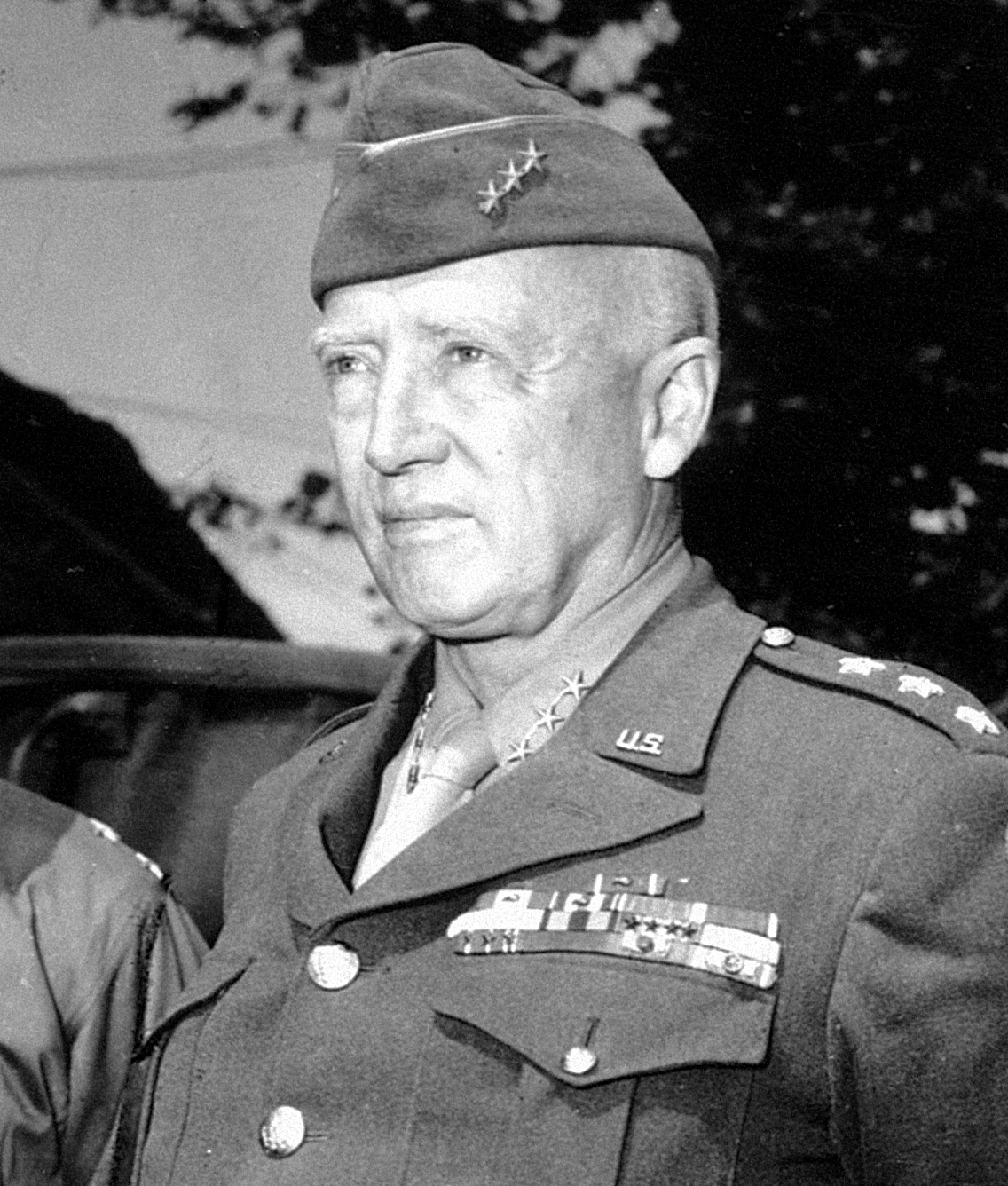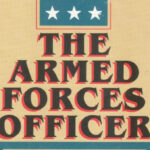
The military censures toxic leadership where it is found, but it can be difficult to recognize such misconduct, unlike more actionable offenses that are easier to identify. What constitutes good or bad leadership often lies open to interpretation.
Is the U.S. military confusing toxic leadership with tough love? Does it know the difference between abusive versus firm — but effective — leadership? In the last 15 years, dozens of leaders have been relieved for cause, including five Marine commanders for having inappropriate “command climates”; a Navy commander who was in a fist fight; 41 lieutenant colonels or higher (to include two general officers) who were court-martialed for various offenses; and an Air Force lieutenant general, relieved for undisclosed reasons after 35 years of otherwise commendable service.
One would hope the U.S. military has learned valuable lessons from the fates of its fallen comrades. Ironically, many of the leaders in question probably thought they were exceeding expectations until censured. Instead, many probably terrorized subordinates and frustrated supervisors. Has the U.S. military learned from their mistakes? Is it moving forward with a more enlightened perspective as to what good leadership is?
Shortly after General Martin Dempsey became the Chairman of the Joint Chiefs of Staff, he shared his concerns about “toxic” leaders in the military. One senior leader defined them as tending to “belittle others” rather than building them up; thus creating an unhealthy climate. Army Doctrine Publication 6-22 describes toxic leadership as a complex state which includes elements of “self-centered attitudes, motivations, and behaviors,” as well as “an inflated sense of self-worth,” and actions that “deceive, intimidate, coerce, or unfairly punish others” for selfish ends. Such leaders have a negative impact on subordinates and their organizations, large or small. Poisonous tendencies need an antidote to neutralize toxicity, but not all leaders who are tough are necessarily toxic by nature. The military must be careful to discern between the two. If it does not, it could lose some of its finer leaders.
The military censures toxic leadership where it is found, but it can be difficult to recognize such misconduct, unlike more actionable offenses that are easier to identify. What constitutes good or bad leadership often lies open to interpretation. It is not even clear to many who read classic works on the subject.
For example, many leaders have read Niccol Machiavelli’s The Prince, a work frequently misinterpreted. One of Machiavelli’s recurring themes is to emulate the actions of great men. His book advises that, “A wise man ought always to follow the paths beaten by great men, and to imitate those who have been the best, so that if his ability does not equal theirs, at least it will have some traces of it.” Some leaders seem to equate “great” with “ruthless,” a term not found in an English translation of The Prince; yet, it is the very adjective most frequently used to describe Machiavelli’s approach to leadership. It may be his own fault, given a question he poses in Chapter 17, as to “whether it be better to be loved than feared.” His answer, given the rare ability of any leader to be both was, “it is much safer to be feared than loved.” With such confusion about the truth of what good leadership is, what are some enduring lessons for us?
Certainly, one lesson is that the military must eliminate flagrantly toxic leaders; but, has it also perhaps purged others who had a flair for theatrics, but who were nevertheless fair and firm? Machiavelli advises us to observe and obtain knowledge from (and about) great men. History provides many role models of leaders who were influential and strong without being toxic, or perfect.
Leaders within the U.S. military services are carefully chosen and selectively promoted on their merits, yet the process often lacks an accurate assessment of their inner characters.
Generals George Patton, “Black Jack” Pershing, and William Tecumseh Sherman were all imperfect leaders. If they were serving today, might any of their careers have been shortened under the increasingly deep scrutiny of the modern-day toxicity police? A balance between the apoplectic and the apathetic must be sought, but where exactly the military draws the line is critical. Anger spiked with “toxicity” needs to be eliminated, but passion arising from strong convictions can often be marshaled into great accomplishments and should not be confused with the former. Nevertheless, some leaders may be advised to attend anger management training out of concern for those whom they lead or live with. But not addressing the other extreme of individuals, who are cold and calculating types, is surely of equal concern.
Misconduct at either extreme needs to be identified and dealt with, regardless of rank. During the Second World War, General Dwight D. Eisenhower (“Ike”) was upset by General Patton’s having slapped more than one soldier under his care. Eisenhower, who had earned General Patton’s trust, responded with an ultimate form of “tough love” toward Patton: he reassigned him — away from command.
A leader can be both strong and remarkable without being toxic or abusive. Like “Ike,” the military’s most senior and most seasoned leaders need to model equilibrium between the military’s cultural DNA code of “do not abuse” and a wise application of tough love. Leaders at all levels can benefit from applying time-proven practices in effective leadership to guide them. I offer three: displaying servant leadership; maintaining ethical boundaries; and demonstrating operational strength.
Servant Leadership
Servant leadership entails genuine regard for service members, civilians, and their families. For almost 50 years now, Robert K. Greenleaf’s (and others’) writings about the concept of servant leadership have inspired Army leadership doctrine and values. In particular, the concept of selfless service is a reflection of servant leadership. Generals Washington, Grant, and Marshall all provide historical examples of senior leaders who answered the call to civilian service when retirement would have provided them an easier choice, with laurels and leisure besides. Those men epitomized the opposite of toxic behavior. Each in his own way took care of service members and was stalwart and mission-oriented, without displaying much ego.
Ethics-bound Leadership
Invoking the British Lord Nelson’s renowned practice of “turning a blind eye” toward an offense or omission is sometimes justifiable. He developed a reputation for bold leadership and probably believed that begging for forgiveness is sometimes easier than pleading for permission. An ethical leader knows where to draw the boundary line between circumventing certain “by the book” bureaucrats of the type found in W. E. B. Griffin novels (and who appear in everyday military life) and those in authority who commit serious ethical breaches, such as the My Lai Massacre. Ethical judgment is critical in preserving Army values such as honor and integrity. Warrant Officer Hugh Thompson, who stopped the 1968 attack on unarmed villagers, provides a great leadership example; his superiors, who tried to cover up the crime, do not. Good leaders need to emulate the likes of Nelson, Thompson, and others who perpetuate a culture of doing what is right as an antidote to the sometimes poisonous practice of “just following orders,” even when those orders may be wrong or even criminal.
Operationally-strong Leadership
Demonstrating operationally-strong leadership presents perhaps the greatest risk for leaders, who might appear to be toxic for doing so. From boot camp hallways at inspection time to the ever-changing dimensions of the battlespace, military life requires adaptable and strong leadership. Strength, of course, can be measured in many ways. Convictions, personal courage, and depth of character are three different ways of looking at strength. Lieutenant General Patton was perhaps our greatest battlefield commander, but he was tragically unsympathetic toward post-traumatic stress disorder (combat fatigue), which weakened his legacy as a great leader, regardless of his success in the fight. Operationally-strong leadership entails strength on two fronts, on the battlefield and in one’s spirit.
Times may have changed dramatically, but great leadership retains a multiplicity of timeless dimensions. Leaders within the U.S. military services are carefully chosen and selectively promoted on their merits, yet the process often lacks an accurate assessment of their inner characters, which turns upon convictions and values, as well as the leaders’ depths of compassion for others. Again, not all anger is malign; not all reserve is productive. And an organizational mandate to “not abuse” is not comprehensive enough to distinguish the toxic leaders from the tough (but essentially caring) ones. Knowing the difference between which leaders dispense poison and which ones display poise, is a skill that the military would be wise to hone. Evaluating leaders with a view towards identifying their true character should yield more of the right kinds of leaders that the military needs. Its service members deserve nothing less.
Michael Piellusch is a contractor serving in the Office of the Administrative Assistant to the Secretary of the Army. The views expressed in this article do not necessarily reflect those of the U.S. Army War College, U.S. Army, or Department of Defense.
Photo: Lt. Gen. George S. Patton Jr.
Photo Credit: U.S. Army Signal Corps (photographer uncredited)





Thank you for sharing. I’m reading this article several years late, but it resonates right now with the recent events on the abuse of power by the ex-USS Forrest Sherman CO, Frank Azzarello. Having served under him, I can vouch for each and every comment made about his leadership and how he treated subordinates. Like a grade-school bully, he would isolate his victims, then reprimand for every little thing they did wrong without an avenue to correct themselves. When the victim would ask for help, he would reprimand some more either formally, verbally, and/or physically through hard pokes or raising his hand as if about to strike. All the while, this would overshadow his own errors in judgment that nearly cost lives. The result, a wolf in sheep’s clothing that tricked his own leadership into thinking that he was a rising star.
I’m sad to say that I have to keep this anonymous. I still have emotional trauma from those days that I work through each and every day, but hope that articles like yours shine a light on the need for military leaders to rise up to the challenge of eliminating toxic leadership practices in our nation’s armed forces.
Thank you for sharing. I’m reading this article several years late, but it resonates right now with the recent events on the abuse of power by the ex-USS Forrest Sherman CO, Frank Azzarello. Having served under him, I can vouch for each and every comment made about his leadership and how he treated subordinates. Like a grade-school bully, he would isolate his victims, then reprimand for every little thing they did wrong without an avenue to correct themselves. When the victim would ask for help, he would reprimand some more either formally, verbally, and/or physically through hard pokes or raising his hand as if about to strike. All the while, this would overshadow his own errors in judgment that nearly cost lives. The result, a wolf in sheep’s clothing that tricked his own leadership into thinking that he was a rising star.
I’m sad to say that I have to keep this anonymous. I still have emotional trauma from those days that I work through each and every day, but hope that articles like yours shine a light on the need for military leaders to rise up to the challenge of eliminating toxic leadership practices in our nation’s armed forces.
Hello Anonymous,
I used to read War Room on a daily basis, but with job changes my daily reading habits have shifted to other sources. When I worked in Silicon Valley years ago, I used to “joke” that I’ve worked for every ogre in the valley. In retrospect, I would only classify one of those “ogres” as toxic, but I did work for several tough bosses along the way (the private sector in general seems to do a better job of mitigating toxicity than the military). Now in 2024, looking back on military and civilian workplaces, your comments are very relevant and resonant. The higher the star rises (by rank reputation, and pivotal position), especially in the military, the less likely the superiors (far fewer in number) are likely to observe, question, or act upon isolated toxic incidents. General Eisenhower effectively managed General Patton after two slapping incidents, but Ike did not ignore the spikes in Patton’s personality. The political realm is perhaps the most alarming as toxic behavior has been demonstrated repeatedly at the highest levels and cults and religious zealots seem willing to overlook imperfections even though those behavioral lapses seem to be reflections of character flaws of a severe and recurring nature.
Recovering but often replaying toxic abuses,
Michael